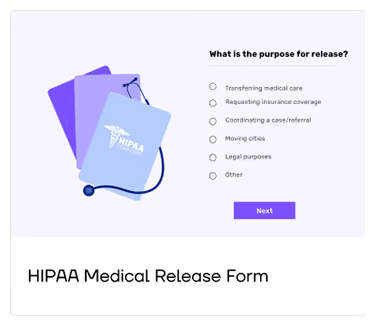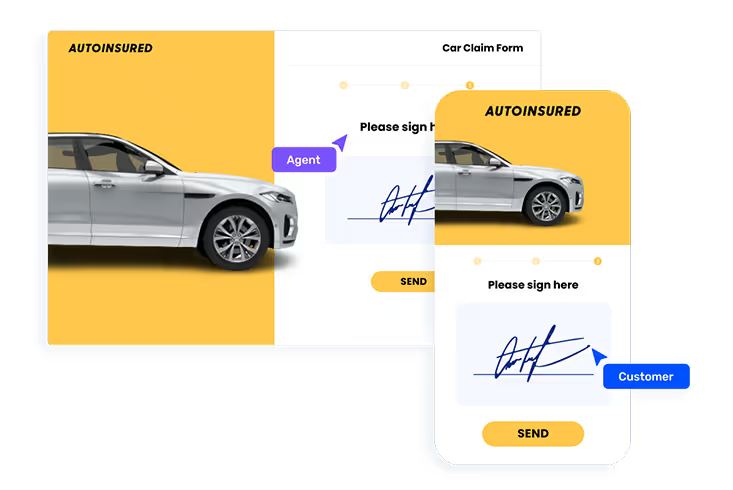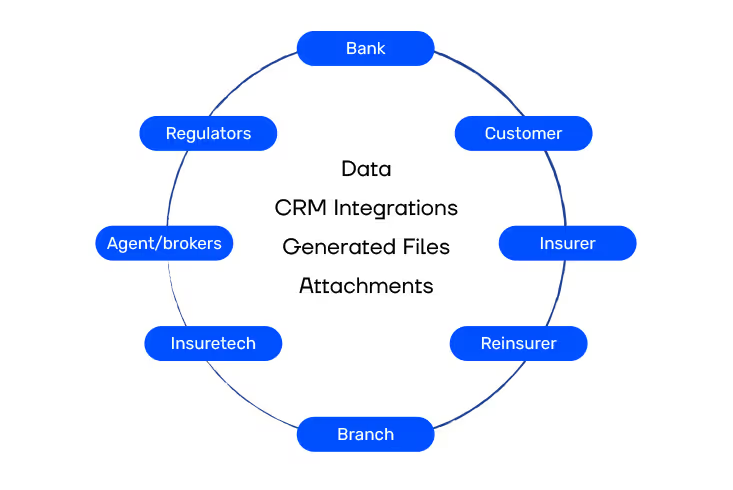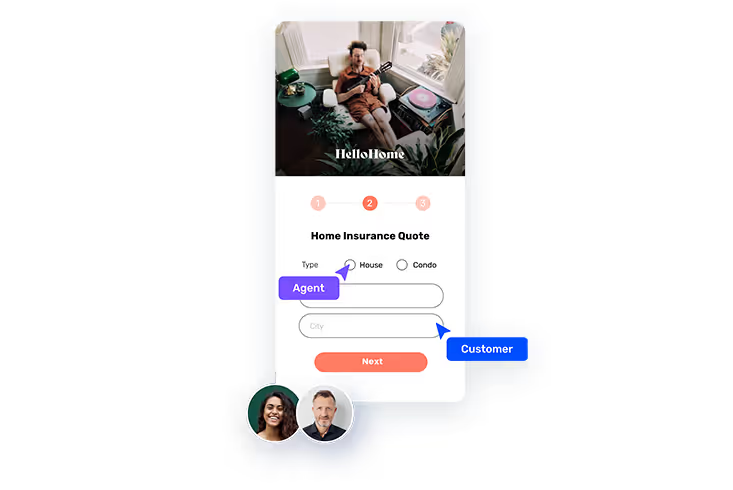Welcome to the era of digital claims transformation
The insurance industry is changing and digital claims experience is a key component.
User experience (UX) represents how customers perceive value from product interaction. From start to finish, the experience should run smoothly, taking multiple steps, procedures and workflows into account.
Claims is a sensitive, stressful process for the customer. The user experience of the digital claims process can directly impact customer satisfaction, loyalty, and trust in the insurer. Users demand simplicity and convenience when it comes to online transactions.
However, ensuring that the digital claims procedure is seamless and frictionless for the customer is not a simple undertaking. The digital claims process can be challenging to navigate for both customers and employees. Insured may need to complete numerous forms before gaining access to health care or other benefits. Oftentimes, this leads to multiple customer service calls, long cycle times, friction and lost time. In order to remain competitive, it's important that insurers focus on improving user experience in the digital claims process.
In this guide we will cover UX/UI best practices from six key areas:
- Creating end-to-end user experience in digital claims
- Managing digital information intake and data gathering from start to finish
- Enacting operational best practices for digital claims user experience
- Assisting customers who need help through the digital journey
- Creating a cross-functional digital claims team
- Removing friction throughout the digital claims journey
Creating end-to-end user experience in digital claims
The first key area is creating end-to-end user experience in digital claims. The steps involved in the claims procedure should be simple and easy to follow. A number of factors influence this, including:
- Proper planning and design work
- Proactively anticipating problems and managing customer expectations
- Streamlining processes and removing friction
- Ongoing testing and refinement
1. Create digital journeys, not one-off interactions
Digital claims are completely different from traditional paper claim processes because they require a digital-first approach. For digital claims, providers and medical practices can create digital journeys that take into account the entire customer experience.
This means that when a person applies for insurance coverage or makes changes to an existing policy, they should be able to access digital channels such as website, chat, email and mobile app in order to communicate with their insurer—not just call center —in order to complete their digital claims journey.

2. Ensure a smooth UX throughout
When it comes to digital touchpoints, no interaction is too small. Something as simple as an error message or slow load time on your website can have huge consequences for UX down the road.
[.emph]Your digital claim process should follow industry best-practices when it comes to both user experience and user interface design. [.emph]
By doing so, you will stay on the cutting edge of digital claims technology as well as provide a positive digital customer experience that patients want from their insurer.
3. Apply intuitive navigation
As we mentioned earlier, the entire digital claims experience should be simple and easy to understand. This means that customers should not need to scroll through lengthy pages of information, excessive forms or complicated navigation before submitting a claim.
It's also important to remember that people are familiar with using mobile apps for banking and shopping, which is why they expect some of the same experiences in insurance claims.
For example, using the image below you can see that people are used to navigating apps with certain design patterns such as three vertical dots, which act as a navigation menu. It's important to keep this in mind when designing digital claims processes so customers don't get lost while navigating through your claims journey.
4. Follow UX/UI best practices
Something as simple as an error message or slow load time on your website can have huge consequences down the road.
Your digital claim process should follow industry best-practices when it comes to both user experience and user interface design. By doing so, you will stay on the cutting edge of digital claims technology as well as provide a positive digital customer experience that patients want from their insurer.
5. Use an easy-to-manage interface
Lastly, the back-end of your digital claims process should be easily manageable by insurance companies with little to no training. The last thing you need is for manual workarounds for errors or other issues to become commonplace because your system is difficult to use. This will not only cost you more in the long-run, but will also annoy customers that need to be helped.
6. Optimize the UX with a “users first” perspective
It's very important to make sure that the user experience is always top-of-mind during claims process design and optimization. This means keeping in mind the actual needs of customers and what they expect from an insurance claims system as opposed to what you as a company may want.
This approach ensures that customer interactions, both during and after the claim, are positive experiences. For example, if a customer expects to receive an email about their claim or payment when it is complete but instead has to contact your call center, they will likely be irritated at the extra effort required.
[.emph]Create digital journeys that take into account the entire customer experience.[.emph]
7. Eliminate paperwork-based thinking
Your digital journey should be a reflection of your company’s brand, not just an online version of a paper process. Make sure to design the digital journey from start to finish by thinking about how you want customers to feel when they complete their claim.
A digital journey is a step by step process that slowly unfolds as the customer completes each part of their digital claim. By strategically placing these steps in a meaningful order, you can help ensure smooth sailing throughout the entire experience.
Digital journey is different from digital touchpoint, which is the digital process required to complete a one-time action.
[.emph]Digital journeys are more dynamic as they consist of digital processes with multiple steps that unfold over time.[.emph]

8. Create a fast and frictionless process with self-service channels
Reducing the time it takes to resolve a digital claim is critical for customer satisfaction, as well as for driving digital adoption within the industry.
[.emph]Customers should be able to easily access their digital claims information, track the status of their claim and upload documents by using self-service channels. [.emph]
This is why it's best to implement technology that provides actionable insights about claim status without overwhelming customers with unnecessary information or steps.

9. Simplify prior authorizations by digitizing workflows
One of the most time -consuming tasks in the insurance claims process is prior authorizations, as well as medical necessity reviews. This type of work can be simplified by using technology that eliminates paper-based workflows and processes that require customer input, which tend to make the digital claims processes less user-friendly.
In addition, you want to provide a way for customers to upload their own prior authorization forms through your digital claims process. This means that customers can submit the same information across multiple businesses, leading to increased efficiency and cost savings.
10. Create a seamless user experience for medical practices
One of the biggest challenges in the insurance claims process is getting all relevant information from medical practices to providers. For example, when a person breaks their arm it's best to have all the information about their claim together in one place, such as any files uploaded by doctors at the time of treatment.
This is why it's critical that you create a seamless user experience for medical practices, which makes getting necessary documents or prior authorizations easier and provides them with insight into claim status so they can give their customers an update.
11. Don't forget about after-the-claim communication
It's very important to create a customer engagement plan that includes communication with customers after the processing of a claim. Customers should see this as a value add and not just something extra you're throwing in for good measure.
Take, for example, a roofer that has their own claims process. The roofer will get customers to sign off on the work being completed after assessing the job site and submitting a quote. This is an excellent way to not only increase engagement with existing customers but also attract new business by showing how your company cares about its customers.
12. Use the right technology to support your claims process
It's important to use the right digital claims and insurance suite that can help you implement a claims process that is not only faster, but also more efficient and cost-effective. The best way to do this is by making sure you partner with an insurer platform provider that offers a tailored solution, instead of using a one-size-fits-all solution.
For example, if you're looking to provide customers with an end-to-end digital claims process that includes the ability to upload documents and track claim status, then look for a software platform that integrates directly with these capabilities. Otherwise, your new claims process could be another siloed solution that doesn't accomplish your goals and can lead to increased costs for you and friction for customers.

13. Use data and analytics to improve claims experiences
Customer analytics provides insight into how customers interact with your insurance claims processes, which helps insurers identify where they are falling short in terms of meeting their end-customer needs. This data can be used to identify the claims processes that need improvement and which customers are struggling most.
For example, you might find through analytics that your customers tend to not upload documents for their claim, so instead of adding a cumbersome step, you can use technology such as Intelligent Document Capture (IDC), which allows customers to submit scanned images of documents through your claims process.
14. Use chatbots for improved customer service
The final tip to improve the claims experience is to use technology such as chatbots to help automate services and reduce wait times for customers. Chatbots are not only easy to implement but also cost-effective, so it's a great way to level up your service offering without breaking the bank.
[.emph]By using technology solutions designed to increase efficiency, you can help your claims processes run smoothly, which ultimately benefits both customers and insurance providers.[.emph]
This creates a win-win for everyone involved in the claims process and results in increased customer engagement and retention, as well as more successful business relationships.

15. Include real digital claims users in digital experience design
It is important to include digital claim users at every stage of the process because they will have unique perspective and expertise on how products work within existing digital channels and customer journeys.
For example, if you are designing a new digital form then ask members who complete that task frequently for their input. By doing this you can gain valuable insight about what works well, what could be improved upon or any additional features which might make it easier to perform specific tasks more effectively. This will also help them feel like an integral part of your company since there is so much shared knowledge between different groups working together towards common goals across digital platforms.

Digital information intake and data gathering from start to finish
Digital claims can be time consuming and even frustrating. To make the whole process easier for your customers, digitize information intake where possible. The insured should not have to search through their files or email in order to find a claim number or digital signature from years ago when they are just trying to get access to health care right now.
By providing users with simple-to-access digital options, you'll reduce the number of errors caused by data entry mistakes or poor handwriting. Here are the best practices for a digital intake process:
16. Pre-populate fields
Instead of asking for information that is readily available on the insured's policy, have the customer enter their claims number or policy number so that you can access the data you already have in the backend. This will prevent you from having to ask them for information you are already in possession of.
17. Validate data at the point of entry
Utilize validation features on claim intake journeys. This is especially important when it comes to claim forms such as invoices for medical services rendered where even a single misplaced digit could result in delayed payment or underpayment.
18. Stop using PDF as a data gathering tool
Don’t use PDFs. PDF is the digital equivalent of the dreaded paper forms. The file format is difficult to work with because it does not allow the user to interact or fill in information on mobile devices. This makes for a frustrating experience and can prevent your customers from completing their claims quickly enough.
While some tools such as DocuSign have been gathering traction, the core of the problem - the bad user experience of PDFs still remains. Why still use it when better options exist?
19. Make it easy to upload documents
[.emph]Use an intelligent document capture solution for quicker and easier data gathering.[.emph]
This allows insureds to take pictures of documents rather than having to search through your business records to find the information they need.
Make sure it is easy to upload any supportive documentation. You may need digital photos of the injury, X-rays and lab results, prescription slips or receipts for out-of-pocket expenses. Make it easy to upload these digital documents in one simple step after entering the claim number.
If you provide customers with access to their personal files, make sure you have a secure way for them to share these files with you.

20. Utilize digital signatures
Make sure you have digital signatures from all parties available at every stage of your digital journey: insureds, providers and insurers necessary to pay the claim all should be able to sign digitally whenever possible during any interactions throughout an entire digital claims experience. This concerns both internal processes as well as digital communication with customers.
Ensure your digital signature is up-to-date and secure for accurate, compliant digital signing of documents.

21. Digital claims, anytime, anywhere
Make sure that digital claims procedures are accessible across all devices (laptops/desktops, tablets and smartphones). Users should be able to file a claim from anywhere they have an internet connection at any time while still receiving customer support via phone if needed.
Provide a variety of options for delivery methods such as email, fax or mail depending on what works best for your customer.
Make sure that any digital forms or documents are accessible in a mobile-friendly format, even if they have to be downloaded and filled out offline. This will ensure your customers can complete these digital claims no matter where they may be when filling out their information.
22. Add save and continue later functionality
Since the claim process can be complicated and long, add save and continue features to the digital claim journey.
This will give your customer a sense of control and power throughout an often frustrating digital claims process for them when they are just trying to get access to health care right now.
Provide digital claims processing 24/seven, even on holidays and weekends to ensure your customers can access their documents whenever they need them.
Operational best practices for digital claims user experience
Ensuring back-office efficiency is just as important as the front-end user experience. Your customer may be delighted at their smooth digital journey, but if your back-office experiences costly errors because of outdated or bad processes, you may lose them - and other customers - before they ever reach your claims process.
23. Use intelligent routing for faster decision-making
Send routing definitions on claims to appropriate agents or claim handlers that are responsible for different business tasks. During the course of a claim, there may be more than one decision point where an order can go in a different direction, depending on information provided by the insured. To ensure the right individual receives the right information, you must monitor the status of claims in real-time.
24. Integrate with financial institutions systems to improve customer experience
Insurers should be using actual bank statements to validate insurance claims, rather than simply expecting customers to provide this documentation as an attachment via email or fax. Banks are able to send back a complete transaction history in a digital format, so this should be the standard for insurers as well.

25. Create a feedback loop
It’s important to collect user feedback throughout the digital claim process so you can continuously improve your digital experience. By asking users questions, they will feel heard and more likely to continue engaging with your company in a meaningful way over time.
Assist customers who need help through the digital journey
Some individuals do not know how to use technology well enough to fill out a digital claim form on their own without assistance from someone else at some point during the experience. In order to make sure everyone has access throughout an entire digital claims journey, you should include assisted digital processes into your product design by incorporating: live chat options; webinars; guided tutorials and user manuals online.
26. Create a digital help desk to assist your customers
[.emph]By creating a digital help desk you can ensure that all of your customer’s questions are answered quickly and effectively. [.emph]
This digital resource will be especially helpful for those who need assistance filling out their digital claim form or navigating the website during different stages in the process.
This feature enables users to access self-service support when they get stuck, which eliminates having to wait on hold over the phone while trying to complete an urgent digital claim. In cases where it is necessary, have representatives from the cross functional team available 24/365 so no one gets left behind due to any unforeseen circumstances beyond their control.

27. Offer self-service features
Provide self-service resources that allow users to obtain information on their own, including digital forms they can complete without having an agent involved.
Include self service options such as chat functions and FAQs in your digital platform to ensure that customers can easily access help any time they need it, instead of having to wait for assistance from customer care representatives.
28. Set up AI powered chatbots for routine, easy to answer problems
AI powered chatbots can be set up for routine digital claims questions that do not require human help. This feature allows users to receive quick and easy support about the most common questions they ask throughout their journey.
29. Include a dedicated help section on your home page
This feature allows customers to search through frequently asked questions and access self-service support like FAQs and digital forms, without having to make contact with customer support representatives first.
30. Offer easy access to live interaction with a representative
Don’t make digital claims a one-way street. There is nothing more frustrating than not being able to contact an actual human being when customers need help.
You should offer digital claims support through multiple channels including live chat, email and phone so your customers can choose the method they prefer when contacting you for digital claim related issues or questions.

31. Offer co-browsing
Users are more likely to complete an entire digital claim form when real-time given assistance at different stages of their experience.
When users have a digital representative walk them through the entire digital claims journey, more of them complete their forms successfully and more quickly.
This feature gives you an opportunity to connect with your customers on a more personal level and ensure they are enjoying the experience as much as possible.
When you guide your customers through each stage of the process, they can ask questions before completing their forms instead of having to return later to fill out sections they didn’t understand or leave errors in their claim form.

32. Guide your customers throughout the claims journey
Include digital communication to send reminders, alerts and updates providing a more engaging user experience throughout the digital journey.
Create a cross-functional digital claims team
To have an effective digital claim process, it is important to create a digital claims team made up of representatives from each department involved in the digital claim journey. This includes members from marketing, product management and customer service.
The purpose of this group is to identify areas for improvement throughout your digital claims experience. By working together you can make sure everyone’s voice is heard, which will result in better user experiences across all departments within your company.
It’s also helpful if the entire team comes from different backgrounds because then there won’t be any bias when gathering data or testing new ideas due to familiarity with digital claims.
33. Empower your team with correct tools
Make sure your digital claims team has the right tools and processes in place to provide a positive digital experience for customers.
This means that everyone should be able to access any digital claim data, reports or feedback at all times so decisions can always be made with accurate information.

34. Collaborate with product development
It is also important to include digital teams as part of product development process from beginning stages onwards because they will have unique perspective and expertise on how products work within existing digital channels and customer journeys.
[.emph]The goal here is for this group to make recommendations about future changes based on user behavior during digital claims interactions throughout an entire journey [.emph]
instead of only looking through marketing lens like other departments might do. This way you won’t end up making mistakes such as designing something without understanding what your customers want.
35. Set up onboarding process for new digital claims team members
Onboarding is an essential aspect of digital claims user experience because it ensures that everyone on the team has access to all relevant policies and procedures.
To make this process more effective, you could even create a digital onboarding checklist with action items during different stages in the process so users can keep track of what they need to do next. This way there won’t be any confusion about who needs to complete which task when or where everything should take place from start to finish. For example, if someone leaves their job then other members will know exactly how long that person had been using digital claim tools before leaving and whether there are any outstanding tasks left unfinished by them after they depart.
36. Integrate with internal systems
Improve workflows through better technology integration between systems used by both employees and customers. This will provide digital channels with complete and accurate information so that customers can receive benefits quickly.
Provide positive reinforcement throughout each stage of the digital claim process
The digital claims process is complex and sometimes frustrating, especially when there are many stakeholders involved.
[.emph]You can help make the digital claim journey more pleasant by providing positive reinforcement throughout each step of the digital experience with multiple touchpoints.[.emph]

37. Hold your customers’ hand from start to finish
For instance, you could create a welcome email with helpful tips to get started on the digital form or include an animated message thanking customers for completing their digital claims form once it’s been submitted successfully. These types of proactive tactics will result in less customer frustration while helping your company build trust over time as you demonstrate care and appreciation towards them during this difficult but necessary part of healthcare reform.
38. Ask questions and collect user feedback at every stage of the digital claiming process
Digital claims are complex processes that have many moving parts within each department of any given insurance organization. If there is an issue or misunderstanding somewhere along the digital journey, it’s important to identify this problem before things escalate into frustration for both parties involved.
By creating touchpoints throughout different stages of digital claims during which you ask customers about their experiences, you are practicing good communication habits when it comes to understanding what people want from companies today. This proactive approach lets them know how much they matter as individuals instead of feeling left out in the cold by their insurer.
39. Use incentives and gamification techniques
Offer incentives or even use gamification (points systems) when working with digital claims in order to keep users engaged throughout the process. Some insurers have been known to offer discounts on future products if their insured completes their digital claim successfully - creating an overall pleasant experience for both parties involved. Incentives at each step of the way will also encourage fast completion times, which is another key factor when designing digital platforms due to rapidly.

Remove friction throughout the digital claims journey
In digital claims, communication is often a bottleneck because there are so many parties involved. This makes it difficult for the insured to get questions answered in a timely manner and can result in them giving up on their claim altogether.
40. Communicate at every step
Communicate early and often with all parties involved in every step of your digital claiming journey to ensure everyone is on the same page at each stage along this multidisciplinary collaborative effort between multiple departments within an insurance company - getting them excited about using digital platforms for future processes whenever possible!
In addition to basic layout issues such as font size and color schemes come into play that can have a major impact on the digital experience for consumers within an insurance company's digital channel.
41. Give digital access to all parties involved in a claim
There are many steps when dealing with an insurance company. The insured, the insurer, even medical providers can be involved in digital claims. All of these people should have digital access so they can submit information and communicate with each other without having to go back and forth by mail or phone.
42. Use automated workflows
For more complex transactions such as those involving multiple insurance companies or attachments, use automated workflows that ensure a smooth process, and guide all parties step-by-step.
As digital claims become more prevalent, it’s important to use automated workflows. For example, a medical provider could be automatically notified every time a customer submits or updates their digital claim form - ensuring that everyone is kept up-to-date throughout the entire process and eliminating potential issues before they occur.
43. Use a mobile-friendly portal
Many claims are filed via smartphones or tablets. You need to make sure your digital claim process is accessible on these devices if you want users to file their claims quickly and easily using digital tools. A user should not have to wait until they get access to a desktop or laptop to start filling out digital claims forms.

44. Make it visually appealing
Your digital claims should be designed for customers, not just processes. Customers have short attention spans and want things that are simple to understand.
When designing your digital claim forms, stick with clean typography and large buttons so customers know where they need to click next. Make sure any text on these pages is easily read by using plenty of white space between elements as well as an easy to follow color scheme throughout each page in your digital journey. You may also include videos or images if there are important details you would like customers to see before completing their digital claim form(s).
Improve claims experience
Make sure digital claims are quick, easy and accurate to complete online with a digital platform that is functional across all devices. This will ensure happy insureds throughout their entire digital journey from start to finish which increases customer satisfaction in turn increasing retention rates over time.
The digital claiming process can be frustrating for multiple parties involved because of its complexity. However, if implemented correctly with helpful tips from this post as well as good communication habits then users will have an overall pleasant experience which helps establish trust between both groups while keeping them engaged from start to finish!
45. Improve digital claims experience with no-code
Digital claims are a complex process that involves multiple parties including the insured, insurer and third parties.
No-code digital platforms can help insurers quickly and efficiently improve their claims experience by using a Drag & Drop builder that enables employees to design digital claim journeys according to UX/UI best practices in a matter of hours.
The no-code digital platform will allow for easy integration into your claims system as well as all the benefits of digital transformation that come with it such as automation, speed and accuracy.
This ensures happy customers who have a pleasant experience throughout their entire digital journey from start to finish which helps establish trust, leading to increased customer satisfaction (and retention rates) over time.
The bottom line
- UX/UI best practices in claim management can be split into two categories: Operational and end-to-end user experience.
- The digital claims experience should be simple and easy to understand, so that the customer can have their claims resolved quickly.
- The process must also provide actionable insights about claim status without overwhelming customers with unnecessary information or steps.




.avif)
.avif)


.avif)
